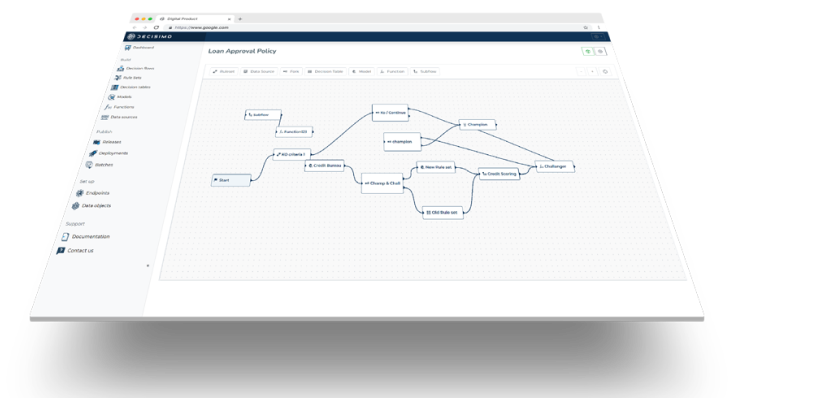Decision Engine 101: How and Why to Choose the Right One
Published on: 2024-08-10 18:36:09
There are different choices for decision engines, which may be also known as rule engines. Some are scripted rules, some are decision tables, and some are more sophisticated engines with decision flows and different components.
Rule engines stick to decision rules, while decision engines handle more advanced decision logic in a flow.
Why a Decision Engine is Better than Code
An alternative to a decision engine can be own scripted code in python or another programming language. Another alternative is a self-hosted copy of open-source systems like Drools.
Enterprise solutions to decision engines have been historically only on-premise solutions like FICO Blaze Advisor, SAS Real-Time Decision Manager, or Experian Power Curve.
On-Premise or Cloud - Which One to Choose?
With the proliferation of cloud, there are now many choices for different types of decision engines, some of which are decision as a service.
Making a decision on which decision engine to choose can be difficult, as there are many choices and many different types of decision engines.
One way to narrow down the choices is to decide on the type of decision engine that is needed. The on-premise solution can provide seemingly better sense of control. The cloud solutions can provide better scalability.
Pricing will also be a deciding factor - on-premise solutions are generally more expensive than cloud solutions.
Functionalities of a decision engine
These systems will often allow for easier rule management, as well as integration with data sources, and other cloud-based services.
Engines are technically separated into two parts:
- Decision / Rule management part
- Decision execution part
The business logic functionalities that a decision engine can have:
- Rule sets
- Decision tables
- Scorecards
- Decision trees
- Mathematical functions
- API Integration of data sources
- Scripting language
- Machine learning model import
- No-code rule management user environment
For a detailed exploration of the underlying architecture that powers these functionalities, particularly focusing on rule engine components and their cloud-based advantages, read our in-depth article on Rule Engine Architecture.
You can read more about the functionalities of the Decisimo decision engine here.
Licensing and fees
Licensing structure is based on the structure and support. Some enterprise providers may charge separately for each part. Fees for the rule management part are based on the number of users operating the user interface. Fees for decision execution part based on the volume of transactions or sizing of the hardware that executes the decisions.
Some examples of pricing structure:
- Open source / Freeware
- One-off software license
- License purchase + annual renewal license fee
- Software as a service usage-based fee
- Usage-based fee + per-seat fee
Post-purchase
Once you make the decision on a solution, the process of implementing the decision engine starts. The process starts with formalizing the decision strategy and continues with integration into your infrastructure.
You can read more on the topic of implementing a decision engine here.

